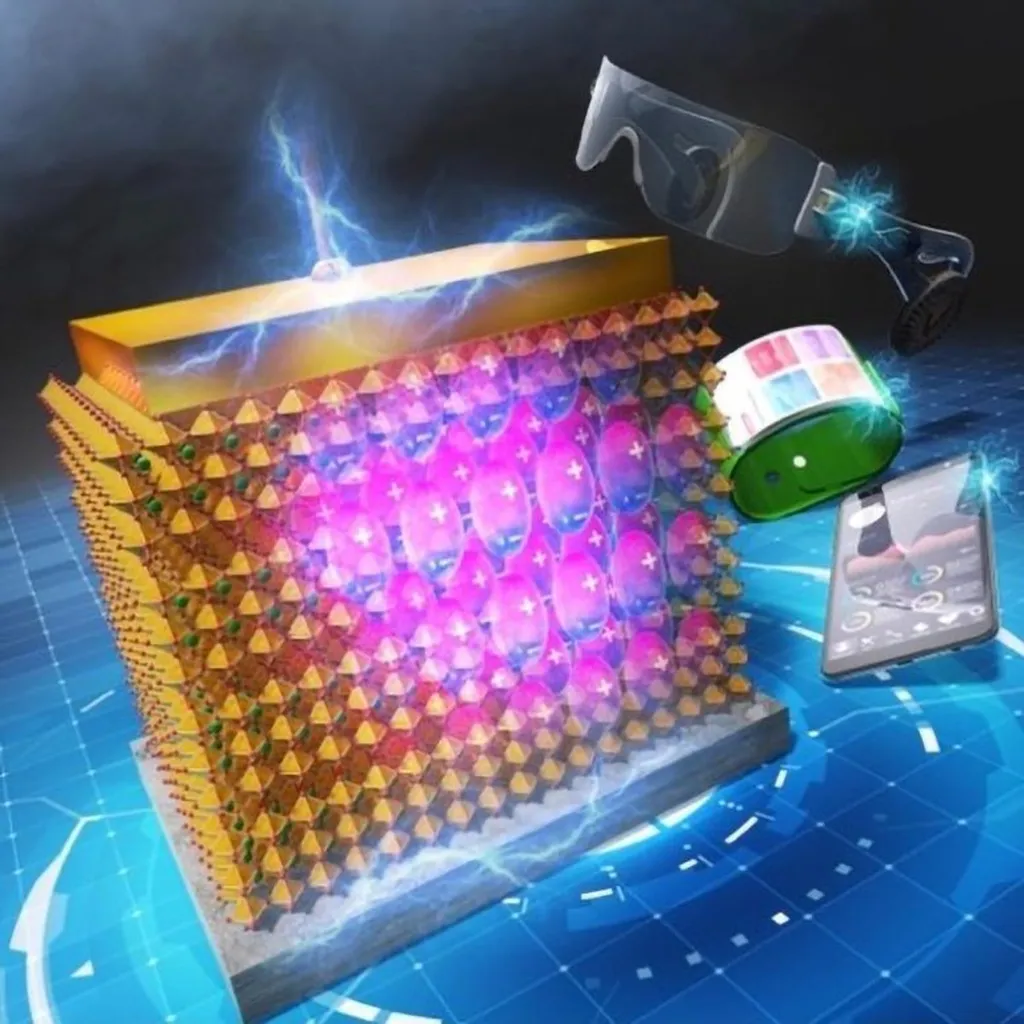In the relentless pursuit of miniaturizing pulsed power devices, researchers have long grappled with a fundamental challenge: balancing high energy storage density with energy storage efficiency. Now, a groundbreaking study led by Yue Pan from the Key Laboratory of Nonferrous Materials and New Processing Technology at Guilin University of Technology in China, offers a promising solution. Pan and his team have developed an entropy-driven strategy that could revolutionize the energy storage capabilities of dielectric ceramics, with significant implications for the energy sector.
At the heart of this innovation lies the manipulation of phase structures and the suppression of interfacial polarization in dielectric ceramic capacitors. These capacitors are crucial components in pulsed power systems, but their performance has been hindered by the trade-off between energy storage density and efficiency. Pan’s research, published in the Journal of Materiomics, introduces Sr(Sc0.5Nb0.5)O3 (SSN) as an end-member to modulate the phase structure of (Bi0.5Na0.5)0.5Ba0.5TiO3 (BN50BT) ceramics. This strategic addition endows the ceramics with a multiphase structure, establishing a super-paraelectric (SPE) state at room temperature.
“The introduction of SSN not only enhances the polarization response but also effectively suppresses interfacial polarization, leading to a significant improvement in the electric breakdown strength of the system,” Pan explains. This dual enhancement results in ceramics that exhibit a remarkable energy storage density of 6.24 J/cm3 and an impressive energy storage efficiency of 89.02%. Moreover, these ceramics demonstrate outstanding stability across a wide range of frequencies (5–150 Hz) and temperatures (25–140°C).
The implications of this research are far-reaching. By optimizing the energy storage properties of dielectric ceramics, this entropy-driven approach could pave the way for more efficient and compact pulsed power devices. This advancement is particularly relevant for the energy sector, where the demand for high-performance, miniaturized components is ever-growing. From renewable energy systems to electric vehicles, the potential applications are vast and varied.
Pan’s work represents a significant step forward in the field of materials science and engineering. By leveraging the principles of entropy and phase structure modulation, the research team has unlocked new possibilities for enhancing energy storage performance. As the energy sector continues to evolve, innovations like these will be crucial in meeting the growing demand for efficient and sustainable energy solutions.
The Journal of Materiomics, where this research was published, is a leading publication in the field of materials science, focusing on the interdisciplinary study of materials and their applications. The journal’s name translates to “Journal of Materials Science and Engineering” in English, reflecting its broad scope and relevance to various industries, including energy.
As we look to the future, the entropy-driven strategy developed by Pan and his team could shape the next generation of energy storage technologies. By addressing the long-standing challenge of balancing energy storage density and efficiency, this research opens up new avenues for innovation and development in the energy sector. The potential impact on commercial applications is immense, promising more efficient, reliable, and sustainable energy solutions for a wide range of industries.

